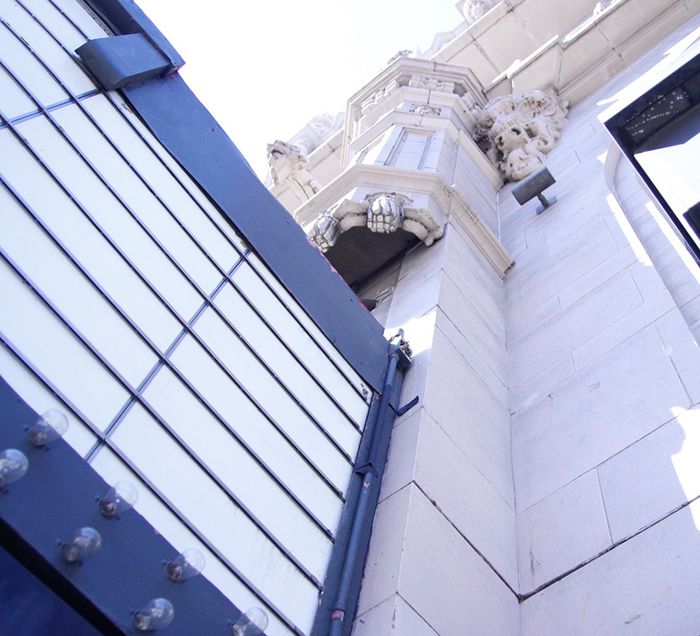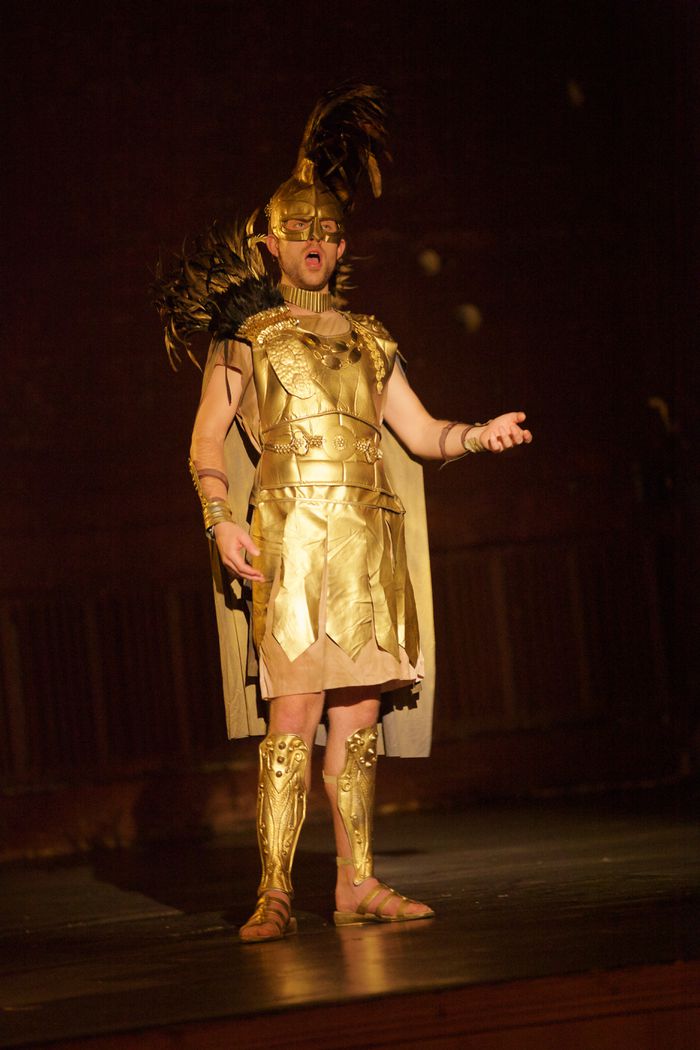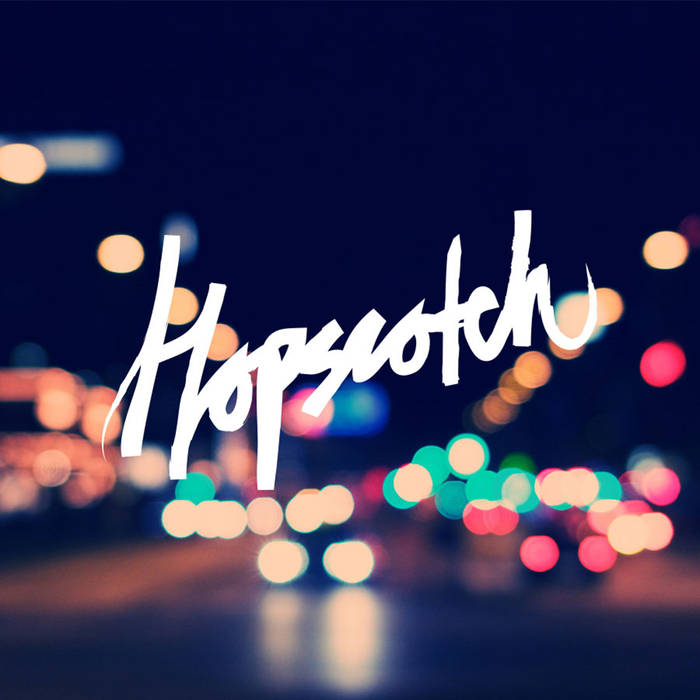-
Chapter 2 CrashRed Route - An intersection in Boyle Heights
Lucha and Jamson exchange information in the aftermath of their accident.
-
Chapter 4 Lucha's Quinceañera SongRed Route - Mariachi Plaza, Boyle Heights
Lucha remembers the day she left her childhood behind.
-
Chapter 6 Jameson PortraitYellow Route - The 2nd Street Tunnel, Downtown Los Angeles
Jameson contemplates the multifaceted nature of his personality.
-
Chapter 7 The ReunionYellow Route - A Rehearsal Studio in the Arts District
Lucha and Jameson connect at Lucha's performance of Orpheus and Eurydice.
-
Chapter 8 First KissRed Route - Hollenbeck Park, East Los Angeles
Romance blooms on Lucha and Jameson's first date.
-
Chapter 9 Angel's PointGreen Route - Angel's Point, Elysian Park
Lucha and Jameson share a passionate physical experience.
-
Chapter 11 The Floating NebulaGreen Route - The Corn Fields, Los Angeles State Historic Park, Chinatown
The metaphysical peak in Lucha and Jameson's love.
-
Chapter 12 WeddingYellow Route - City Hall, Downtown Los Angeles
On their wedding day, Lucha gives Jameson a fateful gift.
-
Chapter 14 The Phone Call, Part 1Red Route - Traversing between the Arts District and Boyle Heights
Lucha receives a mysterious phone call from a voice she seems to recognize.
-
Chapter 17 Orlando's FairwellRed Route - Evergreen Cemetery
Before leaving Los Angeles, Orlando pays his last respects to his wife.
-
Chapter 18 Interlude (Car Wash)Green Route - AirStream Trailer, Elysian Park
Reflect on the impact of a location's geography on a person's psyche.
-
Chapter 24 The Red NotebookRed Route - Utter darkness
In a state of darkness, Lucha is haunted by Jameson's red notebook.
-
Chapter 25 The Other WomanYellow Route - The Bradbury Building, Downtown Los Angeles
Still submerged in darkness, Lucha dreams of Jameson's infidelity.
-
Chapter 26 HadesGreen Route - Bowtie Parcel, Los Angeles River
Lucha descends to the underworld in search of Jameson.
-
Chapter 28 Lucha and Orlando in LoveYellow Route - Historic Core, Downtown Los Angeles
After years apart, Lucha and Orlando reunite in Los Angeles.
-
Chapter 33 Farewell From the Roof TopsRed Route - Rooftops, Toy Factory Lofts, Biscuit Lofts, Ito Building Tower, Arts District
Lucha makes peace with Jameson's disappearance.

Orfeo
Orfeo: James Onstad
Violins: Eric KM Clark, Mona Tian
Text by Tom Jacobson
Music by Marc Lowenstein
Director’s Notes:
“Jameson loved traditional opera, as we discovered in Chapter 8, and his favorite opera is Monteverdi’s Orfeo. In this chapter, where former memories still haunt her, Lucha remembers going to see it – and the memory transports her (and us) to the Million Dollar Theater in downtown.
“She admits not understanding much about it, but the voice of the solo tenor as he implores the boatman to let him cross the river, the famous aria ‘Possente spirito,’ stays with her. In her memory, everything else disappeared—the sets, the rest of the audience, the orchestra—and she suddenly felt a communion with this ancient voice.
“This scene recreates a memory state: she wanders the empty rows in the balcony, where far in the distance, Orpheus sings on a bare stage illuminated by a single ghost light – two ghostly violins, out of sight, support their duet.
“This scene was all about distance: the vast distance between Lucha and this faraway Orpheus figure. After more immersive chapters like Chapter 25 or Chapter 8, scenes like this one and Chapter 33, where musicians played on distant rooftops, offered distance and detachment. To me it kind of implied the arc of growing up: as we take leave of certain elements in our lives they seem to get farther and farther away. The penultimate chapter – Chapter 35, where the older Lucha calls her younger self – shows the ultimate distance as also being the most intimate closeness.
Jennifer Lindsay says when singing in Hopscotch, self-care is paramount.
“One of Lucha Reyes’ most famous performances in Los Angeles was at this very theater – another way the legendary Mexican singer wove her way through the fabric of Hopscotch. When we needed something to accompany the audience’s path down the fire escape at the end of the chapter, the choice seemed obvious: Lucha Reyes’ ‘Por un amor,’ which played through concealed speakers throughout the alleyway. In this way, the immortal voice of Lucha Reyes reclaimed her space in a way that echoed the haunting memory our fictional Lucha experienced opposite the ghostly tenor.

The Million Dollar Theater
Opened in 1918, it is the first theater to have shown variedaes, Spanish language variety shows. At the height of her career in the 1930s-40s. Lucha Reyes appeared onstage at the Million Dollar Theater in downtown to much critical acclaim.

“The leaf in the river
The memory of a moment
That’s all you get
Catching on wet stone
Then swirling on.”
“The Orpheus myth became a useful spine for the story when we were in the writing phase, but using Monteverdi’s setting of it — a piece often cited as the “first” opera — in such a pronounced way puts us into conversation with operatic history. Hopscotch was the third production of my company The Industry, and each work strove to expand on the operatic genre and create new ways of creating and experiencing opera. When I started the company, I often cited Monteverdi to imagine the difference between the process of making the work and how history canonized their finished work: when they were creating Orfeo, opera was not a genre. Instead they thought of creating something interstitial – not quite theater, not quite a concert, not quite an official ceremony or celebratory spectacle, and definitely not an oratorio. They let the unpredictable path of colliding art forms – music, literature, choreography, architecture – define a collaborative project that could only be labeled a ‘work’…or, in the Italian, opera. That always struck me as so contemporary, and starting The Industry grew from a belief that the most exciting path for new opera was to connect back to that initial aspiration.”

